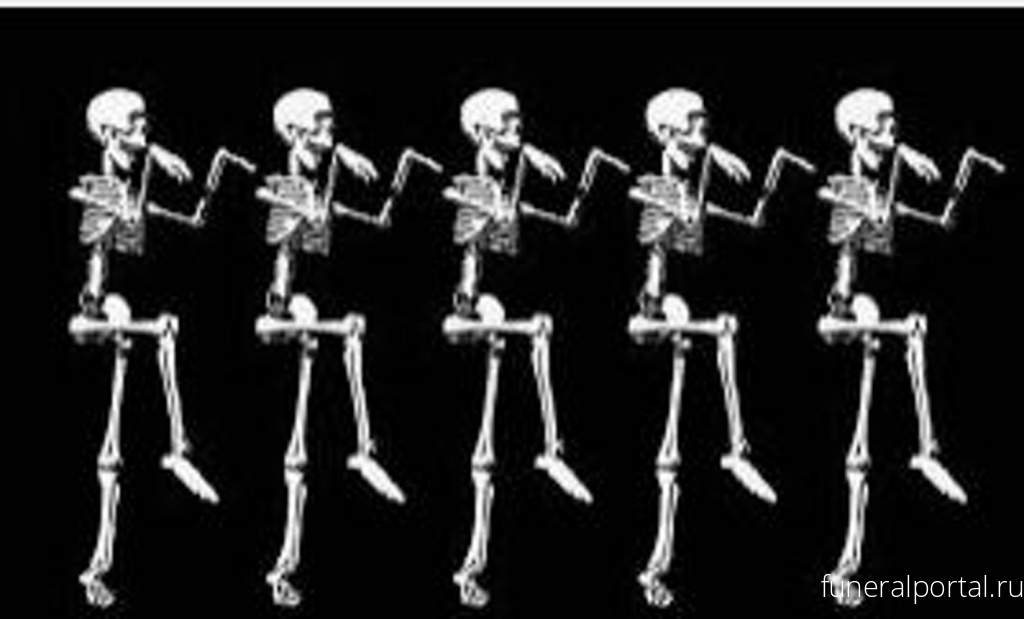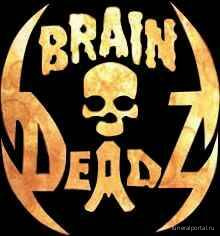The gut-wrenching murder of George Floyd on May 25, 2020 put African American mourning and burial practices on international display. From the ways in which white supremacy undergird African American deathways, to the ways in which Black mourners courageously used their grief to demand societal change in policies and laws that long oppressed Black communities, the world took notice of Black grief, mourning, and burial.
Not too long ago, the passing of Aretha Franklin illustrated to the world the stylish and lavish ways Black folks bury their dead. From her open-casket viewing revealing her ‘red bottoms,’ to her gold Promethean casket (the same model George Floyd was buried in), African American last rites and mourning are steadily moving from margin to center. Although coverage of the Homegoings of George Floyd and Aretha Franklin ran non-stop on many national news networks, the vast majority of white folks and people deemed outsiders of the American Black community, still did not know exactly what they were looking at.
Well, let me put you on game by answering the most pressing question, “what is a Homegoing?”
7 Elements of African American Mourning Practices & Burial Traditions

Image via Library of Congress.
Why is it Called a Homegoing?
Isn’t it just a funeral? Well, no.
A Homegoing, like its name implies, is the symbolic return of the human spirit back to its heavenly home, invoking the Christian idea of God as Father and so therefore going back home/to heaven to be with one’s Father/Creator of life. It is a culturally distinct end-of-life ceremony within the Black American community that is steeped in the religious culture of the Black church – although the decedent does not have to be a practicing Christian. Fundamental to the Homegoing are the gospel songs and church hymns, and it is usually set in a church, namely the church home of the decedent or the bereaved family.
The hymns, gospel songs and the designated solos frame the Homegoing encouraging public displays of grief. At my maternal grandmother’s Homegoing, we made sure that her oldest child, my Auntie Jamie, sang “When You Hear of My Homegoing,” one of grandmama’s favorite spirituals and one she had long requested to be sung when her time came. Mourners clapped in unison, shouted, and cried. The relief provides the necessary steps toward healing for which the songs and the eulogy, which doubles as a sermon, both play a very important part. The syncopated sounds and rhythm can provide balm to a hurting soul while the eulogy reaffirms the importance of the decedent’s life and the notion that they are in a better place.
The Homegoing is the ceremonial send-off of the deceased to heaven. What’s important to remember is that it is a celebration of the decedent’s life. Its key elements–along with the public expression of grief and well-placed spirituals–are length, open-casket, style and flare. Time is generally suspended at a Homegoing and it is acceptable for songs to run long and for those in attendance to sing songs not on the program and even to come to the front of the church and share memories of the deceased, highlighting their importance to the community.
Upon entry, mourners, in pairs, are directed by church ushers and/or funeral home staff to file past the open casket stop and say last goodbyes and even remark on what a good job the funeral director did on making the decedent look so good. As ushers and funeral home staff direct them to their seat, they follow the path that leads them from the open casket to file past the front row–the immediately bereaved family members–where hugs and looks of encouragement are given. Upon departure, ushers and funeral home staff direct mourners to file past the open casket to say one last goodbye and file out the church to the outside.
For more on this topic:1) Passed On: African American Mourning Stories, A Memorial by Karla Holloway.
2) “Homegoings” directed and produced by Christine Turner

Image via Library of Congress.
Open Casket / ”Casket Sharp”
Traditionally speaking, Black folks have an open-casket Homegoing and when they don’t, the whispering may very well start as to why not. You may overhear comments that presume the funeral director could not ‘fix’ the decedent well enough to life-like status, or that the bereaved did not want ‘so-and-so’ all up on their deceased loved one (i.e. touching/kissing the body). Whatever the reason, it is more common than not for the body to be on full view throughout the entire ceremony. However, it is just as common for the funeral home staff to close the casket right after all mourners have had their viewing upon entering the Homegoing. That signals to all funeral go-ers that not only will they not get a customary second chance to view the body at the end of the Homegoing, but also that the family is asking for privacy as they grieve and mourn.
“Casket sharp” was curiously derived from the Homegoing being one of the only public appearances where Black folks were allowed to present themselves not as someone’s slave, servant or Jim Crow minstrel.
More than anything, the open-casket viewing is a time for the decedent to shine and look their very best–”casket sharp.” Casket sharp is a term commonly used in the Black community to describe not just that someone is wearing formal wear, but that the person is stylish and very well-dressed in a manner that is fit for the most formal of formal occasions – the Homegoing. The description of style and flair in the overall ensemble that includes coiffed hair, shoes, and accessories is simply unmatched. Casket sharp is not thrown around but intentionally invoked when someone’s outfit is clearly superior to all present. It is so flawless and thus should be the last outfit ever worn– their Homegoing.
“Casket sharp” was curiously derived from the Homegoing being one of the only public appearances where Black folks were allowed to present themselves not as someone’s slave, servant or Jim Crow minstrel. It is a colloquialism rooted in this defense mechanism so much so that once Black people were admitted to the American cash economy during Reconstruction, elaborate funerals were at the top of their list. This was dramatized throughout the first half of the twentieth century in movies like “Imitation of Life” where the co-star, Annie (played by Juanita Moore), had a deathbed scene where she has written out funeral instructions, right down to what she would wear in her casket.
In contemporary times, casket sharp is used not just to describe someone’s Sunday’s Best but more so a deliberate display of expensive clothing, jewellery and one’s socio-economic status that may or may not include upward mobility from higher education and stardom. This was directly illustrated in Rickey Smiley’s 2011 comedy stand-up routine entitled “Open Casket Sharp”, where he was dressed in a fashionable designer suit meant to display his accomplishments as a famed comedian, actor and radio show host. In contemporary times, casket sharp has expanded to mean class, wealth and social status that was illustrated by clothing and dress accessories.
For more on this topic:1) “Aretha Franklin’s Funeral Fashion Showed Us How to Mourn” by Doreen St. Felix.
2) “Emmett Till’s Open Casket Funeral Reignited the Civil Rights Movement” by Katie Nodjimbadem.
Musical Selections
As previously mentioned, church hymns, gospel songs and spirituals all frame the Homegoing celebration. At its start, while mourners are escorted in by church ushers and/or the funeral home staff, the church choir sings hymns about heaven, God, hope, and the healing strength of the Lord. This is especially true for me when I hear “Total Praise” at a loved one’s services. It is not just the lyrics but the volume and passion accompanied by the organ and drums that extend hope and give comfort to mourners. They unify mourners and allow for funeral goers to give a choral embrace to the family who is suffering a loss.
In addition, and through their selected renditions, soloists are able to give condolence and pay respects. It is very common for soloists, as they prepare to sing, to first discuss their relationship to the deceased, shed tears through the memory and then use the song as a way to individually grieve but take the steps to publicly heal in the supportive environment.
As bereaved Courtney Humphrey prepared to sing “His Eye Is On the Sparrow,” a popular song sung at Homegoings, you hear her say that she inherited her voice from her grandfather, he would want her to sing, so as emotionally difficult as it was for her, she was going to “push through it.” (Watch here). As she crescendos and sings the lyrics “When Jesus is my portion/My constant friend is he,” a fellow mourner shouts “sing Courtney” (2:00-2:18). This shout is heard among the many “amens” and claps that let her know she was not alone in her mourning and not alone in a new life without her grandfather.
For more on this topic:1) “The Unbreakable Spirits of Black Gospel During Funerals” by Danielle Broadway.
2) The Grave Woman’s “Top 10 Gospel Songs for Black Funerals”.

Photograph via Anita Katherine Dennis
Funeral Programs
During a ceremony where time is suspended, and just about every mourner wants to stand and a give a special tribute about the deceased or sing a solo, it is important to have a structured agenda of scheduled activities. This is one of the main functions of the funeral program. The following are the elements and the ordering of a Homegoing celebration, although other Homegoings may include more and have particular elements carried out by different members of the community, and may be arranged a bit differently.
Musical Prelude
Processional
Scriptures
Old Testament……………………………….….. Pastor
New Testament……………………………..…….Family Member
Prayer…………………………………………………Pastor
Words of Encouragement…………………….Pastor
Solo…………………………………………….……..Friend of the family
Obituary (Read Silently)
Special Tributes
Co-workers
Members of community organizations where decedent was a member
Members of volunteer organizations where decedent was a volunteer
Friends
Extended Family
Immediate Family
Reading of Resolutions…………………………..….Extended Family
Solo………………………………………………….………Friend of the Family
Eulogy………………………………………………………Pastor
Recessional
As the institution of slavery has made it extremely difficult to trace our family tree, funeral programs have served as a very important means of record keeping.

Courtesy of the author
The Homegoing is a celebration of life and the funeral program shouts this. At least one page of the funeral program is full of high-resolution color photos of the deceased posed with his/her family and friends, while it is common to have two full pages front and back.
My nephew Willie (pictured here), had 3 full pages of color photos that illustrated his life from when he was a little tike up until the youthful age of 28, when his life was cut short by senseless street violence. There are multiple pictures with his mother, son, girlfriend, grandparents, aunts/uncles, great aunts/uncles, cousins, and friends. This was followed up with a page that chronicled his life: listing of date and place of birth, educational background and listing of his maternal and paternal kinship network, going back 3 generations. Funeral programs serve as biographies–a way to connect the future with the past–another one of its functions. As the institution of slavery has made it extremely difficult to trace our family tree, funeral programs have served as a very important means of record keeping.
For more on this topic:1) “A Conversation with Aunt Carol: The Fluid Functionality of Funeral Programs in African-American Culture” by Michelle Pinkard within Women and the Material Culture of Death edited by Maureen Goggin and Beth Tobin.
2) “New Digital Archive Explores 133 Years of African American Funeral Programs” by Nora McGreevy.
The Repast

Image via Sisters in the Spirit of Houston
The repast is the literal feast that follows the burial or, if in the occasion the body is cremated, after the Homegoing (FYI: cremation is still comparably low in the Black American community). The food is prepared to perfection and prepared in bulk for all funeral goers to eat–and eat 2 or 3 times over. Traditionally, the food is prepared by the home church as a gift to the bereaved. At my nephew Willie’s Homegoing, not only did the church home prepare a feast that included multiple meat, vegetable and dessert options, but the very good friend of my sister Aleta (Willie’s mother) owns a BBQ restaurant and insisted on bringing food from her family’s home restaurant.
When someone dies, appetite is usually the first thing to go. The repast, a feast shared between the bereaved, is a way to get back to eating, a way back to normalcy. It is a time of nourishment and fellowship–repairing your body with sustenance surrounding by family and friends. It is at the repast, usually the very last event in the last rites ceremonies, that there is a purposeful shift in mood, a shift to a celebration, sometimes even a party. At Davante’s repast, this is exactly what happened. The first five or six minutes of the video, as mourners are arriving to the repast, you see how folks are greeting one another and from the way that most are seeking out and hugging a middle-aged woman in the black mask wearing a black and white dress, that she is the mother of the decedent. And there is lots of conversation, laughter and joy at seeing family members and friends of family that one has not seen in a long time. This is all mixed with music and, of course, food.
There is joy in meeting people who have worked, volunteered and/or gone to school with the decedent. They share their memories of the deceased again highlighting his/her importance to a bigger community.
For more on this topic:1) “The Repast: Self and Collective Love in the Face of Black Death” by Haile Eshe Cole.
2)“Black Funeral Food Traditions Are an Essential Part of Grieving” by Nneka Okona.
R.I.P. T-shirts

Courtesy of the author
R.I.P. T-shirts are ritualized mourning wear. Although it may not be unique to African American mourning culture, it is absolutely distinct to it. Having multiple origin stories that tie back to 1980s and 1990s urban gang culture, and the burgeoning hip-hop culture, these T-shirts feature a high-definition picture of the decedent with imagery and phrases important to his/her life and the bereaved family. The pictures are carefully picked and most likely convey an important memory to the wearer or bereaved family. On the shirt are birth/death dates as well as religious iconography to convey that the person is in heaven.
The R.I.P. T-shirt resists stereotypes that marginalize Black mourning, showing that the deceased were part of kinship networks that miss them fiercely.
Believed to be rooted in gang culture, mainstream white society has sought to dismiss the decedents featured on mourning wear by trying to portray them as hooligans and ruffians. By putting angel wings on the deceased, and bible scriptures right alongside family nicknames, the R.I.P. T-shirt resists stereotypes that marginalize Black mourning, showing that the deceased were part of kinship networks that miss them fiercely. Usually first worn at the wake or the repast, the R.I.P. T-shirt helps to usher in a celebratory mood during the last rites events. With food in hand and fellowshipping with other bereaved family members, mourners are encouraged to remember the happy memories, starting with the one on the t-shirt.
For more on this topic:1) “Fresh to Death: African Americans and RIP T-Shirts” by Kami Fletcher.
2) “Long Live Chill #LLC: Exploring Grief, Memorial, & Ritual in African American R.I.P. T-Shirt Culture” by Kami Fletcher within Beyond the Veil: Reflexive Studies of Death and Dying, edited by Aubrey Thamann and Kalliopi Christodoulaki.

Image via Rootsweb.
Slave Cemeteries
Nothing speaks volumes about African American mourning and burial traditions like the slave cemetery. Every tradition Black folks practice today is born out of a period of enslavement that tried to crush our humanity and erase our African roots. But it was through death that we lived!
The slave cemetery, shunned by historical plantations, was the space amidst the trees, water and outskirts of the plantation that our Black ancestors claimed for themselves and their ancestors. They buried their loved ones and remembered them there. As Lynn Rainville has uncovered in her research on hundreds of slave cemeteries in Virginia, these spaces tell the important stories of African American history and culture but also American history, and therefore must be protected instead of left to rot with no financial backing from the federal government. On December 29, 2020 the U.S. Senate passed a bill, The African American Burial Grounds Network Act, that will protect and financial support the restoration and preservation of these sacred spaces.
For more on this topic:1) Hidden History: African American Cemeteries in Central Virginia by Lynn Rainville.
2) Report of the Burial Database Project of Enslaved Americans by the Periwinkle Initiative, led by Sandra Arnold.
DR. KAMI FLETCHER
Dr. Fletcher is an Associate professor of American & African American History at Albright College. Her newest course entitled “African American Deathways and Deathwork” examines African American norms and ideas surrounding death as well as encourages students to see how death intersects with race, class, gender, religion, region. She is the author of “Real Business: Maryland’s First Black Cemetery Journey’s into the Enterprise of Death, 1807-1920”. She is also the co-author of the forthcoming volume Till Death Do Us Part: American Ethnic Cemeteries as Borders Uncrossed (University Press of Mississippi, March 2020). Currently, Dr. Fletcher is working on two manuscripts: The first, co-authored is First 100 Years of Black Undertaking in Baltimore. The second is a co-edited volume, Southern Cemeteries, Imprints of Southern Culture.









